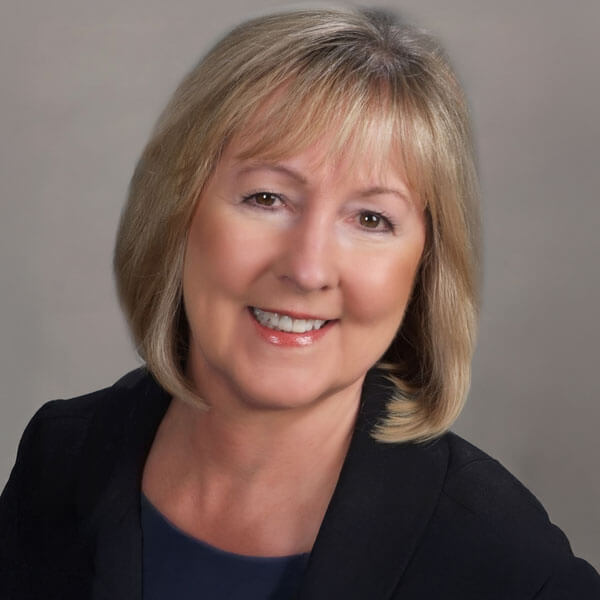About WPPA
Learn More About WPPA Officers, Board of Trustees, Committees, Associate Members, Lifetime WPPA Members, Port Membership, and Bylaws.
Photo courtesy Port of Camas-Washougal
Mission Statement
“Strengthen the Washington Port industry through Collaboration, Advocacy, Research, and Education.”
The Washington Public Ports Association (WPPA) is a nonprofit trade association authorized in 1961 by the state Legislature as the “coordinating agency “for all Washington public port districts. WPPA represents all of Washington’s 75 public port districts, with varying sizes and operations including: marine terminals, barge facilities, industrial parks, marinas, airports, railroads, public markets, utility systems, and more.
Read More
According to our founding statute, the WPPA’s primary functions are to directed the Association to “initiate and carry on” studies common to all ports, to facilitate the exchange of operational information among port members, promote port development on sound economic lines, to encourage commerce and transportation, and serve as a communications channel between ports and the Legislature. As time has gone on, those core functions have evolved to be defined by our current Mission Statement: “Strengthen the Washington Port industry through Collaboration, Advocacy, Research, and Education.”
WPPA executes our mission through the hard work of a full-time staff, supported by a significant amount of volunteer help from the ports themselves and from a dedicated group of associate member partners. We organize our members into various committees that provide policy guidance and operational expertise, ranging from our Marina Committee where members can learn about best practices for managing moorage facilities, to our Legal Committee who provide “Continuing Legal Education” to port attorneys at our spring and annual meetings. Click here for more information on our WPPA Standing Committees.
We are led by our WPPA Executive Committee, comprised of commissioners and directors from ports around the state. Our Executive Committee makeup is intended to reflect the array of different types of ports you can find in Washington – big and small, maritime and aviation, from Eastern Washington to the Olympic Peninsula. The Executive Committee develops our annual budget for recommendation to the Board of Trustees, and provides the Executive Director and staff with strategic direction and guidance.
WPPA Membership is open to all port districts, each having one vote on the Board of Trustees. Official policies of the Association are discussed and voted on at two board meetings each year, held at our spring and annual meetings. Those conferences are held around the state and are part of a series of seminars we host annually to deliver value to our members. We offer a Finance and Administration Seminar, a Directors Seminar, a Commissioners Seminar, an Environmental Seminar, and a “Small Ports” seminar. Visit our events page for more detail on our seminar program:
Key to our work is the engagement of our “Associate Members,” individuals or businesses aligned interest and subject-matter expertise in areas of port operations. From environmental consultants to law firms to other trade associations, our Associate Members help us execute on the value proposition we offer our port members. There are currently over 100 Associate Members.
WPPA maintains a port member directory and a director of our associate members, with both lists located here on our website, and offered in hard copy by contacting the Association.
WPPA Officers & Executive Committee
President

Glen Bachman
Port of Everett
Read Bio
Glen Bachman is an Eastern Washington graduate with a background in real estate and property management. He has held positions as an officer for a large retail developer and a managing broker for multiple properties. Currently, he is serving his second term as a commissioner for the Port of Everett. He is also a board member of Directors for the Washington Public Ports Administration, the Greater Seattle Partners Development Association, and the Washington Council on International Trade, among others. His interests are sustainable and carbon-free energy.
Vice President

Jack Ng
Port of South Widbey
Read Bio
Jack was born in a small village outside of Canton China. He, along with his family, immigrated to Anacortes in 1989. They worked hard as a family to learn the American way and eventually started their own family business. Jack and his family have successfully owned and operated three restaurants since 1999. Jack learned how to work in restaurants all throughout high school, and continued his hard work being a fisherman in Dutch Harbor, Alaska. As a resident of Whidbey Island since 1999, Jack has consistently influenced the community by being a leader. A devout Rotarian since 2008, he became President of the Rotary Club of South Whidbey in 2014, also holding various board positions throughout his time with the club. He spearheaded a fundraising wine club for the organization, and is very involved with the committee that plans the Rotary’s Annual Holiday Wine Tasting fundraiser. Jack has helped raise over a hundred thousand dollars for the community’s benefit and improvement.
In his spare time, Jack enjoys golf, basketball, and spending time with his friends and loved ones, especially his son, Jacob.
Secretary

Mark Brigham
Port of Clarkston
Read Bio
Port of Clarkston Commissioner Mark Brigham brings nearly three decades of diverse experience in both the public and private sectors to the Executive Committee. His previous career roles include Director of Economic Development at the Port of Lewiston and Human Resource Manager for Clearwater Paper. Currently, he is the longest-serving Port of Clarkston Commissioner.
Mark is a community-minded leader who believes in collaboratively pursuing Port industry goals through active local and state level participation and engagement. His commitment to teamwork, inclusiveness and creating a collaborative environment ensuring that all voices are heard and considered.
Mark also serves on the Board of the Southeast Washington Economic Development Association (SEWEDA) and Valley Vision EDC. He is a graduate of the University of Idaho with a Bachelor of Science in Communications and Speech including a minor is Business Management and lives in Clarkston with his wife Dena and daughter Grace.
Treasurer

Jim Rothlin
Port of Bremerton
Read Bio
Jim is currently the Chief Executive Officer for the Port of Bremerton since January 2014 and serves on the executive board of the Washington Public Ports Association. From 2003 – 2013, Jim was the Executive Director for the Port of Chehalis.
Prior to leading the Ports, he was the President of Premiere Services, Inc, which he led for six years, as well as owned and managed movie theaters. Jim also spent time as an adjunct professor at Centralia College, teaching Managerial Accounting for the College’s Bachelor of Science Degree in Business. His background is in Finance, working 12 years as a financial controller for Hitachi America, Ltd., and National Semiconductor in Silicon Valley.
Mr. Rothlin received his Bachelor of Arts degree in finance from Western Washington University and his Master’s in Business Administration from San Jose State University. Jim has 3 children and one grandson. He and his wife, Kelly, currently reside in Port Orchard, WA.
Past President

Ryan Calkins
Port of Seattle
Read Bio
Ryan Calkins was elected to the Port of Seattle Commission in 2017 and re-elected in 2021. Ryan works as a nonprofit professional at Ventures, a charitable organization that supports low-income entrepreneurs to start and grow their businesses in the Puget Sound area. For more than a decade, Ryan ran an import and distribution company in Seattle that was recognized for its industry-leading sustainability initiatives. In 2007, he formed Seattle Microfinance Organization, a nonprofit dedicated to expanding access to capital for entrepreneurs with limited economic resources. Ryan began his career in Central and South America, working for disaster relief and human rights nonprofits.
He received his Master of Arts from Yale University in International Relations and his Bachelor of Arts from Willamette University in Religious Studies. Born and raised in Edmonds by a public school teacher and a small business owner, Ryan now lives in Seattle with his wife and three children.
Past President

JC Baldwin
Chelan Douglas Regional Port Authority
Read Bio
Commissioner JC Baldwin took the oath of office on April 20, 2005 and was re-elected twice to six-year terms. Commissioner Baldwin serves as Vice Chair of the Public Works Board (appointed by Governor Gregoire in 2012). Ms. Baldwin previously served as President of the Washington Public Ports Association Executive Committee in 2012. She is also currently serving as the chair for the Community Aviation Revitalization Board, is past President of both the Wenatchee Valley Chamber of Commerce and Cashmere Chamber of Commerce and is past President and an active member of Cashmere Rotary. Ms. Baldwin has been in the technology sector most of her professional career. Ms. Baldwin is a small business owner of GTC Technical Support in Wenatchee, which has provided customized technical support to clients worldwide for the past 25 years.
Ex-Officio

Deanna Keller
Port of Tacoma
Read Bio
Commissioner Deanna Keller is a native Washingtonian and longtime Pierce County resident. Keller is a Marine Corps veteran who served for five years in the “President’s Own” United States Marine Band in Washington, D.C. She graduated from Western Washington University with a bachelor’s degree, a master’s degree from Northwestern University in Evanston, Illinois, and worked toward a doctorate degree at the Catholic University of America in Washington, D.C.
Keller was the co-owner of Kel-Tech Plastics Inc., a Tacoma-based custom plastics fabricator, and served as its CEO and president from 2008 to 2020. Prior to Kel-Tech, she held a variety of positions over her 24-year career with the Puyallup and Clover Park School Districts, including high school teacher, district program administrator and school principal.
Keller has been active as a business advisor for Tacoma School District’s middle school STEM program and worked with the Economic Development Board for Tacoma-Pierce County on its “Place for Jobs” initiative. She previously served on the board of trustees of the Broadway Center for the Performing Arts (now Tacoma Arts Live) for eight years. She participates as a member of the Transportation Club of Tacoma, Tacoma-Pierce County Chamber, Tacoma Propeller Club, Rotary Club of Gig Harbor and the Northwest Marine Trade Association.
Keller is focused on economic development and recovery, working to ensure that there is equal access and training for career, family-wage jobs in Pierce County. As a former business owner, she is committed to responsible environmental stewardship practices that exceed regulatory standards. A collaborative leader, she has been working closely with other local and state governmental agencies to maximize multiple agency resources.
WPPA Staff

Eric ffitch
Executive Director
Read Bio
Eric ffitch joined the Washington Public Ports Association in January 2023. As Executive Director, Eric represents the state ports’ interests to state and federal elected and appointed officials as well as to international and domestic business, trade and investment interests. Eric is also responsible for directing the day-to-day operations of the Association, including administration, budget, communications, policy and strategic planning functions.
Eric brings more than 13 years of experience in federal and state government relations, including seven years spent in Washington, D.C., working as congressional staff to then-Representative Jay Inslee, Representative Suzanne Bonamici from Oregon, and Senator Maria Cantwell. Prior to joining WPPA Eric led state government relations for the Port of Seattle where he was the Port of Seattle’s primary liaison to the Association. Eric holds a Bachelor of Arts in International Relations and Spanish Literature from Colby College in Maine. He spends most of his free time outside with his wife Brooke and his dog Arthur, exploring the San Juans with his big extended family, or struggling on the golf course. He remains a devoted fan of the Seattle Mariners, the Seattle Sounders, and the Portland Trailblazers.

Carly Michiels
Senior Director of Environmental Policy
Read Bio
Carly Michiels has more than eight years of experience in government relations, strategic communications, and environmental policy analysis and advocacy, including working as Legislative Aide to Wisconsin State Representative Gordon Hintz. This role, which included advising caucus members on key environment, energy, and budget issues, kickstarted her career and passion for environmental policy and political strategy.
As the legislative Advisor for the Wisconsin Department of Administration (DOA), Carly lobbied for complex agency positions, worked on the state budget, and supported various state workforce modernization initiatives, including working on the State Clean Energy Plan with the Office of Sustainability and Clean Energy. Prior to working for the DOA, she was the Government Affairs Director for Clean Wisconsin, an environmental advocacy organization, where she also served as political advisor to the Board of Directors.
Carly holds a bachelor’s degree in political science and environmental studies from the University of Wisconsin Madison, and a master’s degree in environmental policy and Natural Resource Management from Indiana University School of Public and Environmental Administration.

James Cockburn
Government Relations Manager
Read Bio
James Cockburn joins us from the Retired Public Employees Council, where he worked for seven years beginning as their administrative assistant and working his way up to the Executive Director role. In that capacity, his duties included supporting Council needs and key relationships; researching and advising on policy issues; and representing and communicating Council priorities to the Legislature. Most recently, James staffed and advised committees for Community Transit in a senior leadership role within the Finance and Administration Department. He began his career working on campaigns for state and local elected officials.
With experience in advocacy, policy analysis and strategic communication, he’s the perfect fit as WPPA’s Government Relations Manager. In this role, James supports WPPA’s state legislative advocacy work by working to collaboratively build and implement the Association’s legislative program and acting as a resource and connection point for WPPA staff, our members, and policymakers.
James has a bachelor’s degree in political science from Washington State University and is a native of Sequim, Washington. Outside of work, Cockburn is a wine enthusiast and enjoys traveling to Washington’s many premier growing regions. He and his family also enjoy Sounders soccer where he will join the current Executive Director as another soccer fanatic in the WPPA office.

Tasha Cilurso
Business Manager/Auditor
Read Bio
Tasha Cilurso is responsible for the administration of WPPA office operations, financial, personnel and building management. As Auditor, Tasha also provides independent support and assurance of risk management, governance, and internal controls. Tasha comes from a diverse background, having spent over a decade in hotel management with Hilton and InterContinental Hotels Group. Tasha holds a bachelor’s degree in political science from the University of Washington.
Outside of the office she enjoys spending time with her family, traveling, reading, trying new recipes and spoiling her two black labs.

Mandy Lill
Member Development and Engagement Manager
Read Bio
Mandy Lill joined Washington Public Ports Association in January 2023. She is the primary connection for members and partners, is responsible for providing communication and administrative support, and manages the associations meetings and conferences. Mandy has 14 years experience in the port industry and most recently served as marketing specialist for Ecological Land Services, an environmental consulting firm and WPPA Associate Member. Mandy worked for the association previously from 2009-2015 as the Member Services Manager. Her background includes administrative, project, and logistics management.
When not at work, you will find Mandy spending time with her family and doing things outdoors. She especially enjoys golfing with friends, checking out new restaurants and wineries, and traveling.